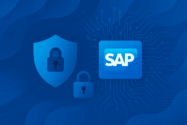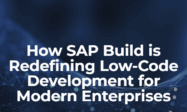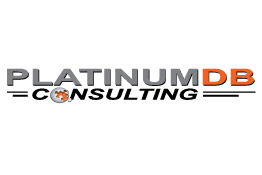SAP Application Development and Integration
SAP ABAP | SAP ABAP Development Tools | SAP ABAP Test Cockpit | SAP API Management | SAP BAPI | SAP Basis | SAP BRF | SAP Business Application Studio | SAP CMS | SAP Design Studio | SAP Development Tools | SAP DevOps | SAP EAI | SAP EDI | SAP Extension Suite | SAP Fiori | SAP Fiori Elements | SAP Integration Suite | SAP Low Code Application Development | SAP Low Code Automation | SAP Netweaver | SAP Release Management | SAP UI5 | SAP Web Application Server | SAP Web IDE
Filter By
Browse By
- SAP Analytics and AI
- SAP Application Development and Integration
- All SAP Application Development and Integration
- SAP ABAP
- SAP ABAP Development Tools
- SAP ABAP Test Cockpit
- SAP API Management
- SAP BAPI
- SAP Basis
- SAP BRF
- SAP Business Application Studio
- SAP CMS
- SAP Design Studio
- SAP Development Tools
- SAP DevOps
- SAP EAI
- SAP EDI
- SAP Extension Suite
- SAP Fiori
- SAP Fiori Elements
- SAP Integration Suite
- SAP Low Code Application Development
- SAP Low Code Automation
- SAP Netweaver
- SAP Release Management
- SAP UI5
- SAP Web Application Server
- SAP Web IDE
- SAP Business Process Management
- SAP Center of Excellence
- SAP CIO
- SAP Customer Experience
- SAP Data and Data Management
- All SAP Data and Data Management
- SAP BW
- SAP BW/4HANA
- SAP Crystal Reports
- SAP Data Archiving
- SAP Data Center
- SAP Data Governance
- SAP Data Integration
- SAP Data Migration
- SAP Data Quality
- SAP Data Services
- SAP Data Strategy
- SAP Data Visualization
- SAP Data Warehouse Cloud
- SAP DMS
- SAP Document Control
- SAP EIM
- SAP ETL
- SAP ETL Tools
- SAP HANA
- SAP HANA Administration
- SAP HANA Deployment Infrastructure
- SAP HANA Studio
- SAP Master Data
- SAP Master Data Governance
- SAP MDM
- SAP Enterprise Architect
- SAP Enterprise Asset Management
- SAP ERP
- SAP Finance
- All SAP Finance
- SAP Accounting
- SAP AR AP
- SAP Asset Accounting
- SAP Billing Systems
- SAP BPC
- SAP BRIM
- SAP Cash Management
- SAP Central Finance
- SAP Controlling
- SAP COPA
- SAP Cost Center Accounting
- SAP Currency Risk
- SAP e-invoicing
- SAP FICO
- SAP Finance Automation
- SAP Advanced Financial Closing
- SAP Financial Consolidation
- SAP Financial Planning
- SAP FX Risk
- SAP General Ledger
- SAP Global Tax Management
- SAP Hyperion
- SAP Order to Cash
- SAP Payment Processing
- SAP Profitability Analysis
- SAP Rebate Management
- SAP S/4HANA Finance
- SAP SWIFT Compliance
- SAP Treasury Management
- SAP Universal Journal
- SAP Governance Risk and Compliance
- SAP Human Capital Management
- SAP Intelligent Technologies
- SAP Platform and Technology
- All SAP Platform and Technology
- SAP Business Technology Platform
- SAP Cloud
- SAP Cloud Connector
- SAP Cloud Integration Platform
- SAP Cloud Migration
- SAP Cloud Platform
- SAP Cloud Providers
- SAP Cloud Strategy
- SAP Digital Signature
- SAP Container Platform
- SAP HANA Enterprise Cloud
- SAP Digital Asset Management
- SAP Smart Forms
- SAP HEC
- SAP Digital Integration Hub
- SAP Hyperscalers
- SAP Infrastructure
- SAP Messaging
- SAP Quality and Testing
- SAP Security
- SAP Spend Management
- SAP Supply Chain Management
- All SAP Supply Chain Management
- SAP APO
- SAP Asset Management
- SAP Business Network
- SAP Digital Manufacturing Cloud
- SAP Digital Twin
- SAP EWM
- SAP IBP
- SAP Inventory Management
- SAP Label Printing
- SAP Logistics
- SAP Manufacturing
- SAP Manufacturing Automation
- SAP MES
- SAP MII
- SAP MM
- SAP MRO
- SAP MRP
- SAP Order Management
- SAP Plant Maintenance
- SAP PLM
- SAP Production Planning
- SAP S&OP
- SAP SD
- SAP SPM
- SAP Supply Chain Planning
- SAP Track and Trace
- SAP Transportation Management
- SAP System Administration
SAP Application Development and Integration
For success and for even survival, today’s companies must develop and roll out applications, with high quality, user experience, and integration, while minimizing risks associated with the rapid development and deployment of applications.
SAP Application Development and Integration
For success and for even survival, today’s companies must develop and roll out applications, with high quality, user experience, and integration, while minimizing risks associated with the rapid development and deployment of applications.
SAPinsider’s benchmark report on Application Strategies and Development for SAP S/4HANA and Cloud discovered that found that the top driver for application strategy is the need to maintain or improve business processes rapidly to support changing needs (50%). The next important driver is the continued demand for SAP and non-SAP applications that connect to core SAP (36%).
Understanding this burgeoning need for developing applications, SAP has bundled several tools in the SAP Extension Suite and SAP Integration Suite which are part of the SAP Business Technology Platform (SAP BTP).
To deliver the value proposition, SAP Extension Suite includes components such as SAP AppGyver for low-code development, SAP Business Application Studio for extending business applications, SAP Conversational AI for voice and bot applications, SAP Mobile Development Kit (MDK) for mobile applications, SAP native SDKs for iOS and Android as well as the SAP Fiori design system and design platform for pre-built common applications for thousands of use cases.
This valuable article Extend Your Core Business Applications and Drive Your Business Forward with SAP Extension Suite outlines the various ways in which SAP Extension Suite provides extensibility and walks through the various steps in the process of utilizing it.
ABAP code forms the bulk of the legacy customizations and extensions. As part of SAP BTP, ABAP environments provide ways to develop using the ABAP RESTful Application Programming Model (RAP), leveraging SAP HANA, SAP Fiori, and a cloud-optimized ABAP language with a clear set of released standard APIs. Developers can utilize a development toolset that enables tight integration with Git-enabled lifecycle management that includes ABAP ABAP editors, dictionary, UI painters, function, class, and web app builders.
Skills are always a major issue in development as the above-mentioned report found. SAP Extension Suite offers options of different technologies and programming languages through various options and runtime environments are available on the SAP BTP: ABAP environment, Cloud Foundry runtime, and Kyma runtime.
Almost half of the respondents in SAPinsider research on Application Strategies and Development for SAP S/4HANA and Cloud are planning or evaluating low-code platforms. There is an expectation of significant impact from these platforms such as ability to deliver applications rapidly, reduced IT costs, and enabling industry standards. Read the article “Governance for Low-code Platforms” on recommendations on governance for low-code platforms.
There is an exciting range of applications that are possible in today’s platforms. Companies like ServiceNow and Pillir.io provide a significant set of prebuilt apps in their low-code platforms. Consultants such as Cognizant, cbs Consulting, Capgemini, and TechMahindra can provide the expertise to drive innovation.
What is SAP Integration?
Establishing a single hub of information is vital to arm business leaders at any organization with the real-time information they need to make the decisions that will benefit their organization the most. While IT teams can manually create some connections, integration platforms are often favored as the solutions to keep all facets of the business connected.
These platforms have significant experience in ensuring that data flows throughout the business to the appropriate points while remaining accurate, accessible, and up-to-date. Organizations should ensure that they keep integration in mind when incorporating new applications and systems into their overall SAP landscape.
Organizations should ensure that all solutions they adopt can become part of a consistent software architecture that will accommodate any changes to business processes, new applications, and technological upgrades.
Some business processes require SAP to connect with multiple systems that communicate with SAP in slightly different ways. These systems can function together, as long as the company is able to find an integration layer that goes in between SAP and these systems, allowing the data to flow freely around the entire SAP landscape.
Why is SAP integration important?
SAP integration is vital for organizations across all industries. Nearly half a million organizations use SAP. Their reach extends to more than three quarters of all transactions between business and customers around the world. The massive scope of SAP powers global commerce. To make the most of this scale, organizations must integrate their SAP software and applications to the rest of their system, including their ERP.
Many organizations are turning more towards Software as a Service (SaaS) applications such as Salesforce to help manage business processes. Companies should be aware that the mixture of on-premise and cloud applications can pose a challenge for integrations, and factor that potential issue into any decisions made about which solutions or services they decide to leverage.
SAP Application Integration: Use Cases
Integration is important for all SAP applications to pair with non-SAP applications. Yet there are certain specific scenarios, systems, applications, and functions in which SAP integration is most common. These scenarios are:
CRM applications: Customer Relationship Management is one of the most vital functions of a consumer-facing business. As such, organizations must ensure that they have tight integration between their CRM systems and their ERP systems. Ensuring that customer data is consistent can help avoid improve overall business agility. To do this, organizations need to have a consistent pipeline of information between CRM systems and ERP systems so that financial, performance, and other business data is easily accessible from all parts of the business.
Supplier systems: Just as businesses must have accurate and up-to-date information for their customers, they must also have that same data for vendors. Staying on top of purchase requests, ensuring that all potential suppliers know what raw materials a business needs, and having a single source of truth for all quotes keeps all financial information accurate and ensures continuity through the supply side of the business.
Third party purchase order systems: While it is important to integrate all applications within ones own business, it is also important to set up a system to communicate with partners, such as third parties who operate purchase order systems. Integrating with these valuable organizations can help streamline new purchase orders, automatically enabling businesses to buy necessary materials while keeping all facets of the organization up to date on the process.
Join SAPinsider to access opportunities for networking and engagement in the dynamic SAP ecosystem. As a member, you will have access to a wealth of valuable resources and content tailored to SAP technologies and best practices like the latest research reports, articles, webinars, and events that will keep you informed and ahead of the curve.SAPinsider membership grants you exclusive access to in-depth analyses, expert insights, and practical guidance that will empower you to navigate the ever-evolving SAP landscape with ease. SAPinsider membership will enable you to remain one step ahead and harness the latest trends, innovations, and strategies to drive your own powerful digital transformations, optimize your SAP investments, and unlock business success.
107 results
-

Layer Seven Security Announces Cybersecurity Extension for SAP Version 2.0 with Major Advancements in Threat Detection and Compliance
Reading time: 3 mins
Layer Seven Security’s upcoming Version 2.0 of the Cybersecurity Extension for SAP enhances threat detection and compliance for SAP NetWeaver, S/4HANA, and Cloud ERP environments, adding support for Java applications, advanced anomaly detection, an expanded library of threats, and alignment with latest SAP security standards.
-

What Agentic Testing Means for SAP Cloud Migration
Reading time: 3 mins
The shift from assistive to agentic AI in software testing, highlighted in a recent Tricentis webinar, emphasizes AI’s role as an active teammate that enhances SAP cloud migration processes by facilitating risk coverage and maintaining compliance through a centralized management system.
-

How SAP Build is Redefining Low-Code Development for Modern Enterprises
Reading time: 7 mins
SAP Build is turning enterprise low-code development into a high-impact engine—letting business users and IT collaborate to build apps, automate workflows, and extend core systems in days, not months. It unifies visual tools with pro-code options, integrates natively with SAP S/4HANA, and shifts innovation from bottleneck to business-led.
-
-

Modernization Today, Prepared for Tomorrow: Crave InfoTech Insights
Reading time: 3 mins
Crave InfoTech’s “Modernization Today, Prepared for Tomorrow” outlines why legacy systems limit growth and how SAP Integration Suite enables fast, low-risk modernization. The blog highlights streamlined processes, API-led architectures, and real performance gains, offering a clear snapshot of how smart integration boosts agility and prepares businesses for future innovation.
-

Level Up Your ABAP Developer Assessments with CoreAssess.AI
Reading time: 2 mins
Learn how CoreAssess.AI transforms ABAP developer assessments. This blog explains how AI-powered analysis accelerates code reviews, identifies risks, and optimizes legacy ABAP customizations — helping organizations save time, reduce errors, and achieve smoother SAP S/4HANA migrations.
-

Managing SAP Print & Scan with LRS | Certified Output for RISE with SAP, BTP & Public Cloud
Reading time: 1 min
Managing SAP print and scan—whether on a corporate network or via the public internet—is critical to business continuity. In this video, learn how LRS Output Management helps global SAP customers avoid costly disruptions, reduce infrastructure complexity, and ensure secure, reliable document delivery across SAP S/4HANA, RISE with SAP, SAP BTP, and SAP Public Cloud. LRS…
-

Low-code Custom Apps: How You Know You Need Them
Reading time: 3 mins
Low-code development platforms enable businesses to swiftly create custom applications, enhancing agility and reducing costs while adhering to SAP’s Clean Core strategy, especially when the need for flexibility arises due to specific workflows or integration requirements.
-
-

The Essential SAP Basis Roles in RISE with SAP
Reading time: 3 mins
The cbs SAP Basis team is essential for organizations transitioning to SAP S/4HANA under RISE with SAP, providing continuous support through planning, go-live, and post-go-live phases to ensure optimal system configuration, operational excellence, and strategic collaboration.
-

SAP’s Life Sciences Industry Solutions
Reading time: 1 min
SAP’s life sciences portfolio provides end-to-end digital solutions spanning ERP, supply chain, product lifecycle management, and compliance. These innovations help organizations accelerate product development, improve operational efficiency, and meet strict industry regulations while preparing for future growth.
-

How Int4 APITester Accelerates SAP S/4HANA Migrations
Reading time: 3 mins
Global Systems Integrators are increasingly adopting Int4 APITester to automate testing processes in S/4HANA transformation projects, significantly reducing dependency on external systems and project timelines while enhancing integration quality and compliance.
Become a Member
Unlimited access to thousands of resources for SAP-specific expertise that can only be found here.
Become a Partner
Access exclusive SAP insights, expert marketing strategies, and high-value services including research reports, webinars, and buyers' guides, all designed to boost your campaign ROI by up to 50% within the SAP ecosystem.
Upcoming Events
Related Vendors
Your request has been successfully sent


